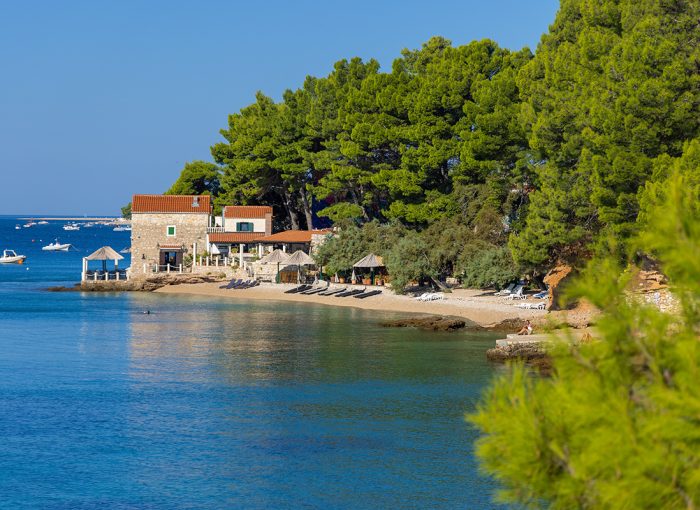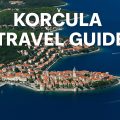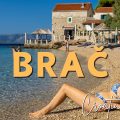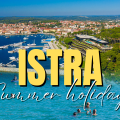Brač Island, Croatia, offers pristine beaches, charming villages, and rich history. From Zlatni Rat to Blaca Hermitage, explore these top 10 must-see spots!
Nestled in the azure waters of the Adriatic Sea, Brač stands as a testament to Croatia’s natural beauty and rich cultural heritage. This enchanting island offers visitors a unique blend of wonderful pebble beaches, rugged landscapes, and charming villages steeped in history. As the largest island in Dalmatia, Brač boasts a diverse array of attractions that cater to every type of traveller.
Table of Contents
From sun-seekers to history buffs, adventure enthusiasts to culinary connoisseurs, Brač has something to offer everyone. Its limestone-rich terrain has shaped not only the island’s physical appearance but also its cultural identity, with the famous Brač stone being used in the construction of notable buildings worldwide, including the White House in Washington, D.C.
As visitors explore this captivating island, they will discover a harmonious balance between unspoiled nature and centuries-old traditions. The following top 10 must-visit spots on Brač showcase the island’s most remarkable features, providing travelers with an unforgettable Croatian island experience.
1. Zlatni Rat: The Golden Horn Beach
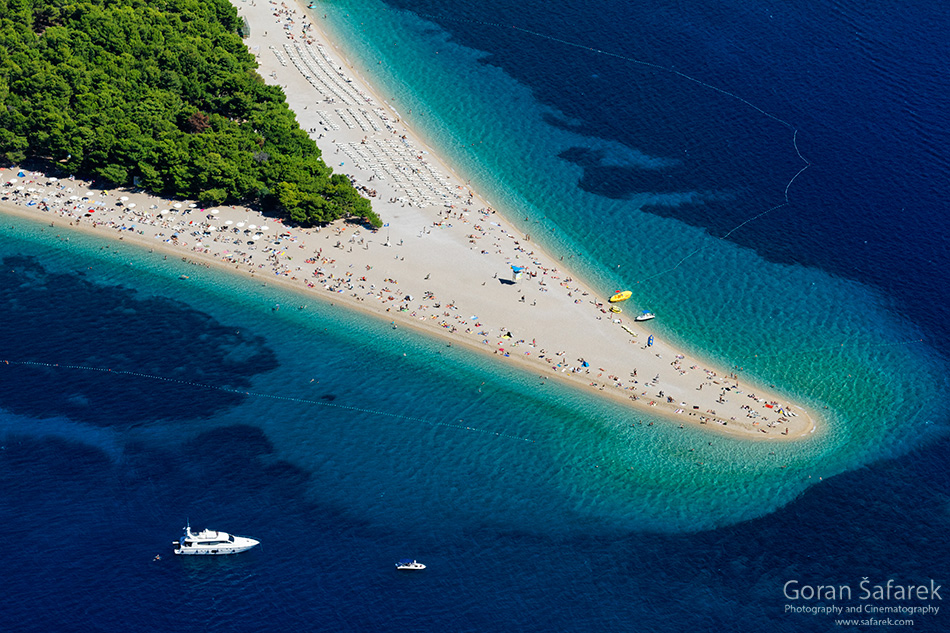
Undoubtedly the most iconic landmark of Brač, Zlatni Rat Beach, also known as the Golden Horn, is a natural wonder that has graced countless postcards and travel brochures. This unique pebble beach extends into the sea like a golden tongue, its shape constantly changing with the tides and currents. The crystal-clear waters that surround the beach offer ideal conditions for swimming, snorkeling, and various water sports.
Visitors to Zlatni Rat will find themselves mesmerized by the interplay of colors between the white pebbles, turquoise sea, and lush green pine forest that backs the beach. The area surrounding the beach is dotted with beach bars and restaurants, providing refreshments and local delicacies to beachgoers.
For those seeking an adrenaline rush, the beach is a popular spot for windsurfing and kiteboarding, thanks to the reliable afternoon winds that sweep across the channel between Brač and Hvar. Whether relaxing on the shore or engaging in water activities, Zlatni Rat offers an unparalleled beach experience that epitomizes the allure of Croatian coastal holidays.
2. Vidova Gora: Scaling the Highest Peak in the Adriatic
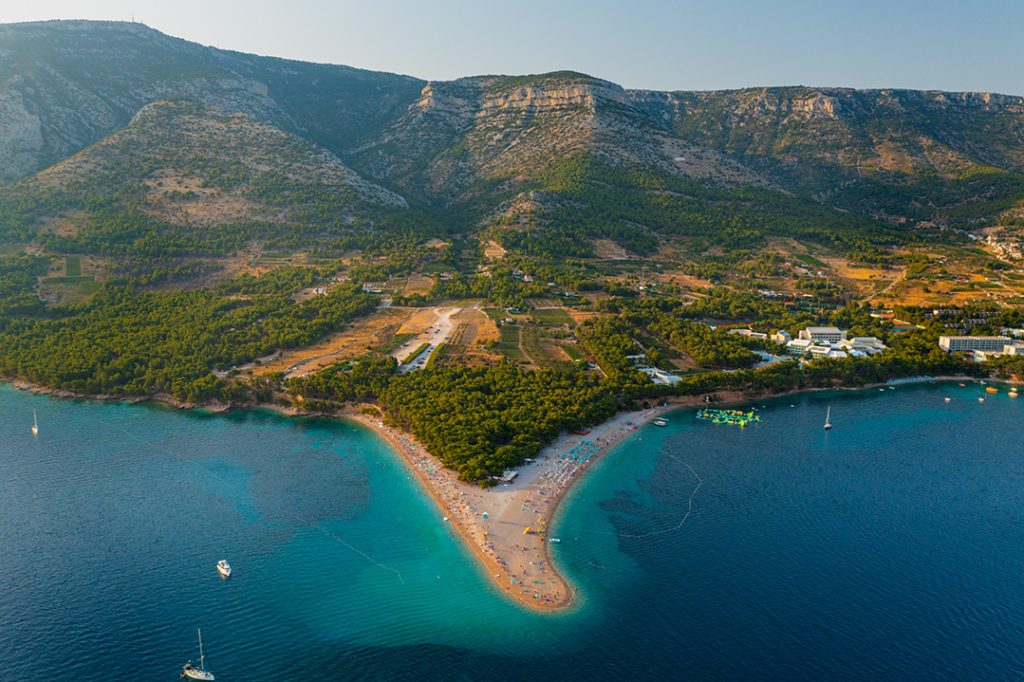
Rising majestically above the island, Vidova Gora stands as the highest peak not only on Brač but in the entire Adriatic. At 778 meters above sea level, this mountain offers intrepid hikers and nature enthusiasts breathtaking panoramic views of the surrounding islands and the mainland coast. The journey to the summit is an adventure in itself, winding through fragrant pine forests and rugged Mediterranean terrain.
As visitors ascend Vidova Gora, they will encounter a diverse array of flora and fauna native to the region. The mountain is home to several endemic plant species, making it a paradise for botanists and nature lovers. At the summit, a small chapel dedicated to St. Vid (after whom the mountain is named) provides a serene spot for reflection amidst the awe-inspiring vistas.
On clear days, the view from Vidova Gora extends as far as Italy, offering a truly unforgettable experience. Many hikers choose to time their ascent to coincide with sunrise or sunset, when the play of light across the Adriatic creates a spectacular display of colors. For those less inclined to hike, a road leads almost to the top, making this natural wonder accessible to all.
3. Bol: A Charming Coastal Town with Rich History
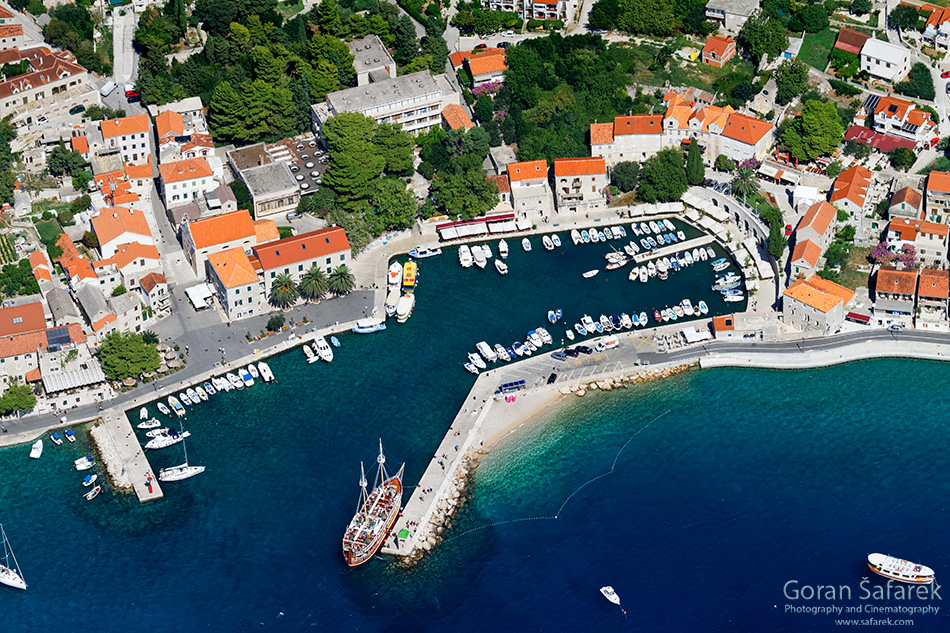
At the edge of Zlatni Rat Beach, on the southern coast of Brač, the town of Bol captivates visitors with its picturesque harbor, winding stone streets, and rich cultural heritage. As one of the oldest coastal settlements on the island, Bol boasts a history that dates back to Roman times, evident in the numerous historical buildings and artifacts scattered throughout the town.
The heart of Bol is its charming promenade, lined with centuries-old stone houses, quaint cafes, and art galleries. Visitors can wander through the narrow alleys, each turn revealing a new glimpse into the town’s past. The Dominican Monastery, perched on a small peninsula east of the town center, houses a museum with an impressive collection of ancient Greek and Roman artifacts, as well as works by local artists.
Bol is not just a haven for history enthusiasts; it’s also a paradise for beach lovers and water sports aficionados. With its perfect blend of historical charm and modern amenities, Bol provides an ideal base for exploring the wonders of Brač.
4. Pučišća: Home to the Famous Brač Stone
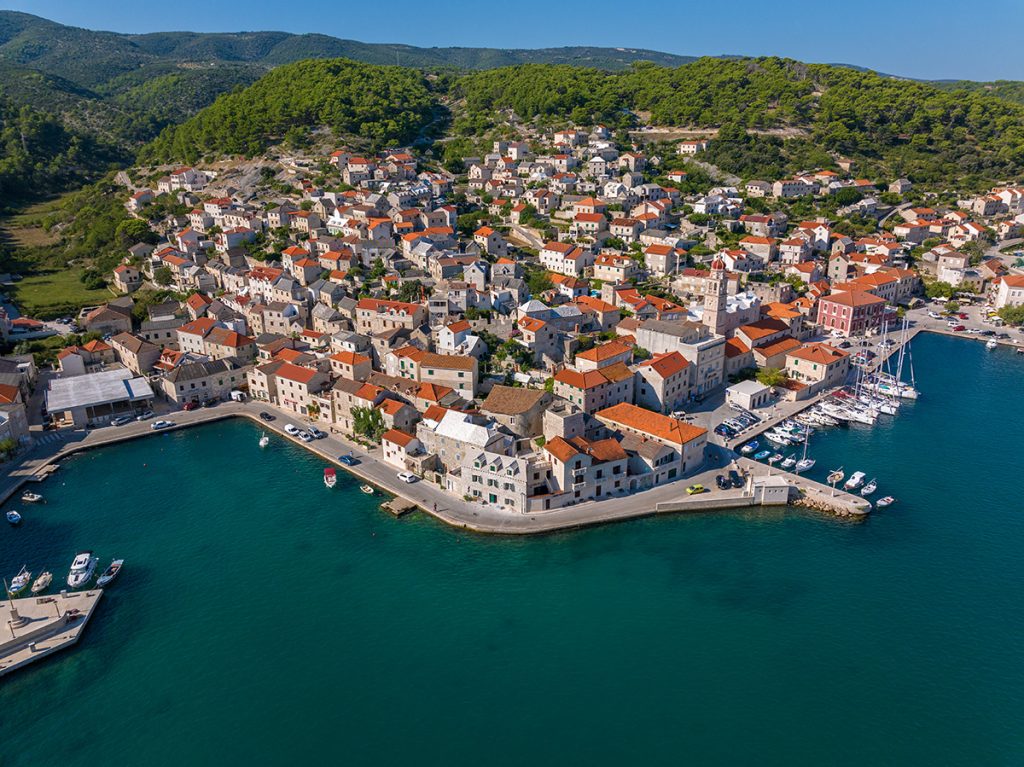
Tucked away in a deep bay on the northern coast of Brač, Pučišća is a picturesque village renowned for its connection to the island’s most famous export: Brač stone. This gleaming white limestone has been quarried on the island for centuries and has been used in the construction of iconic buildings worldwide, including Diocletian’s Palace in Split and the White House in Washington, D.C.
Visitors to Pučišća can witness the age-old tradition of stonemasonry firsthand at the Pučišća Stone Masonry School, one of only three such schools in Europe. Here, students learn the intricate art of hand-carving stone using traditional tools and techniques. The school offers tours where visitors can observe the students at work and even try their hand at carving.
Beyond its stonemasonry heritage, Pučišća charms visitors with its Venetian-style architecture and tranquil atmosphere. The village’s waterfront is lined with elegant stone houses featuring distinctive white roofs, creating a harmonious blend with the surrounding landscape. Local taverns serve fresh seafood and regional specialties, offering a taste of authentic Dalmatian cuisine in a setting of unparalleled beauty.
5. Supetar: The Island’s Bustling Capital
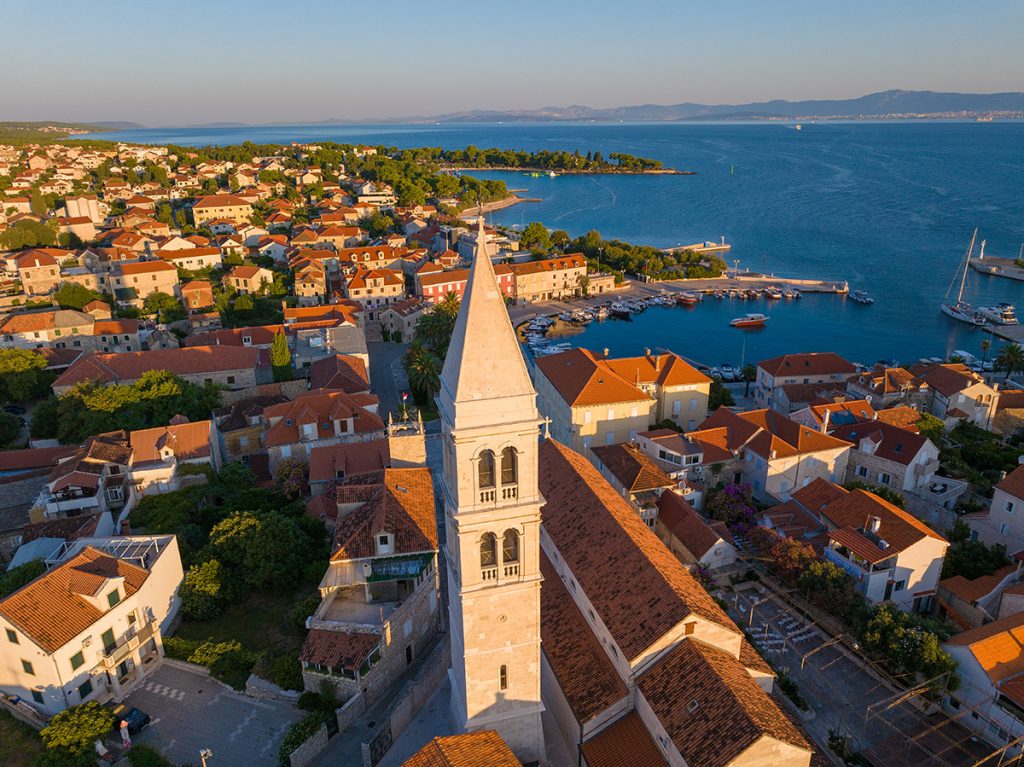
As the largest town and main port of entry on Brač, Supetar serves as the island’s vibrant capital. This charming coastal town welcomes visitors with its lively harbor, bustling markets, and an array of restaurants, cafes, and shops. Despite its role as the island’s commercial hub, Supetar has managed to retain its traditional Dalmatian character, evident in its narrow stone streets and centuries-old architecture.
The town’s history is on display in its many cultural landmarks, including the Church of Mary Annunciation, which dominates the town’s skyline with its distinctive bell tower. The church’s interior houses valuable works of art, including an altar painting by the renowned Venetian artist Felice Cignaroli. Nearby, the Leroj clock tower stands as a testament to Supetar’s Venetian heritage.
For those seeking relaxation, Supetar boasts several beautiful beaches within walking distance of the town center. The main beach, with its shallow waters and numerous amenities, is particularly popular among families. As evening falls, the town’s waterfront comes alive with locals and tourists alike enjoying leisurely strolls and dining al fresco in the many restaurants that line the promenade.
6. Lovrečina Bay: A Secluded Paradise for Beach Lovers
Hidden away on the northern coast of Brač, Lovrečina Bay offers visitors a secluded paradise far from the crowds. This picturesque cove is home to one of the few sandy beaches on the island, a rarity in Croatia where pebble beaches are more common. The fine golden sand and crystal-clear shallow waters make Lovrecina an ideal spot for families with young children.
The bay is surrounded by lush pine forests, providing natural shade and a perfect backdrop for picnics. The ruins of an early Christian basilica dating back to the 5th or 6th century can be found near the beach, adding a touch of historical intrigue to this natural haven. Visitors can explore the remains of the basilica and imagine the lives of those who worshipped here centuries ago.
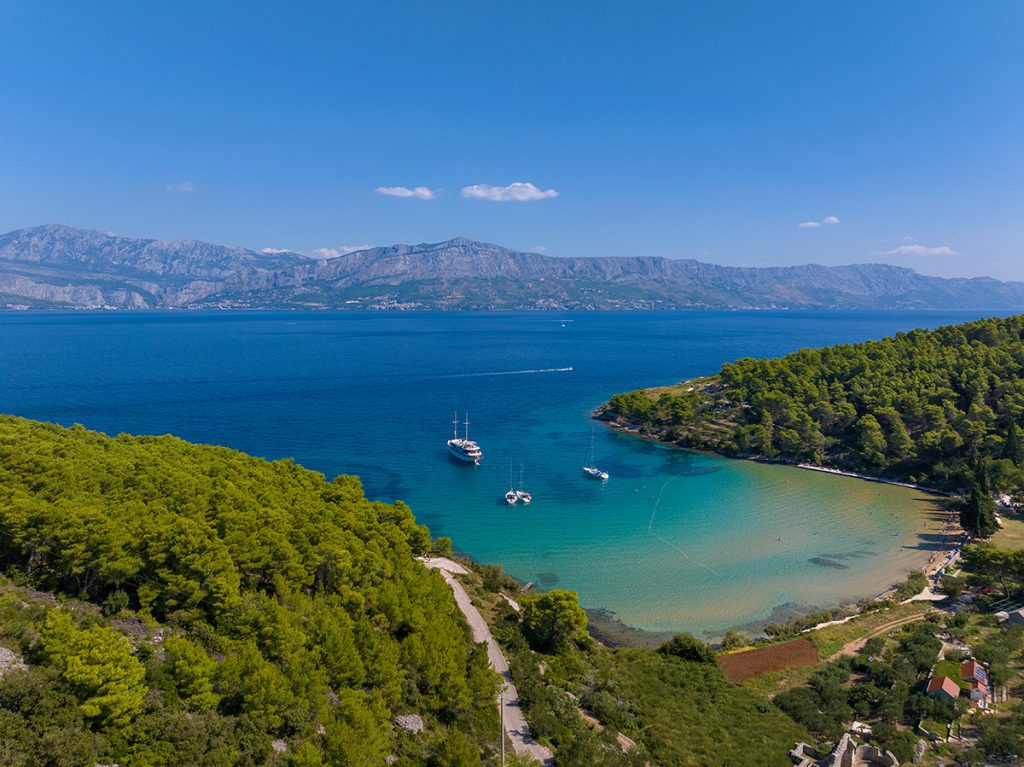
Despite its secluded nature, Lovrečina Bay offers basic amenities, including a beach bar and rental facilities for sun loungers and umbrellas. The bay’s calm waters are perfect for swimming and snorkeling, with the opportunity to spot various marine life in the clear depths. As the sun sets, the bay takes on a magical quality, offering spectacular views across the Brač Channel to the mainland.
7. Blaca Hermitage: A Testament to Human Perseverance
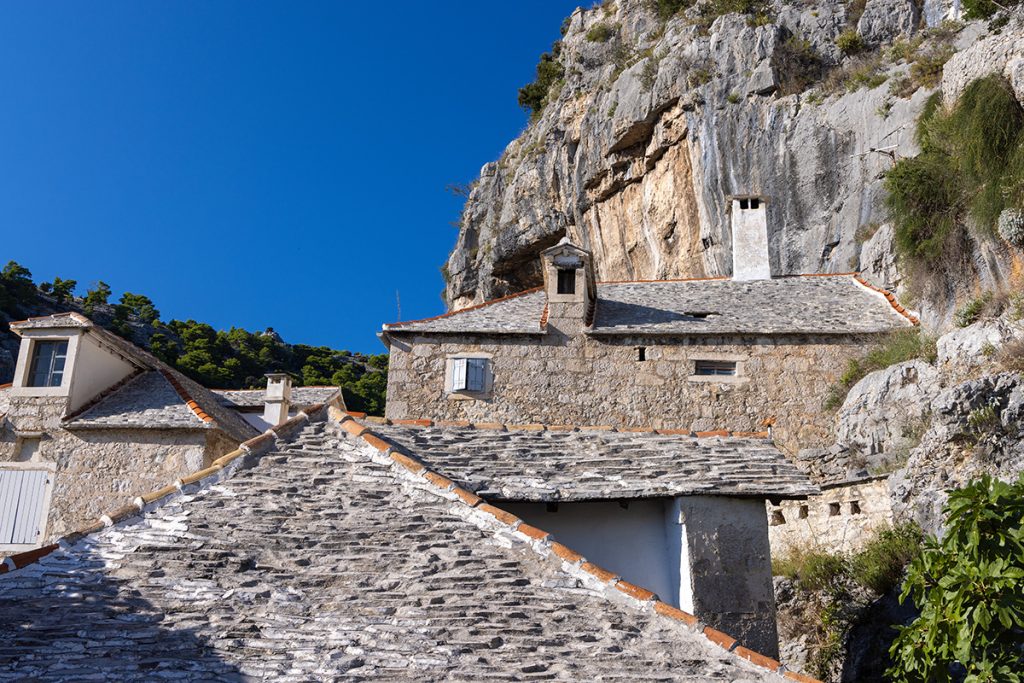
Perched on the side of a steep cliff on the southern coast of Brač, the Blaca Hermitage stands as a remarkable testament to human perseverance and ingenuity. Founded in the 16th century by Glagolitic priests fleeing the Ottoman invasion, this monastery-turned-museum offers visitors a glimpse into a unique way of life that endured for centuries.
The journey to Blaca is an adventure in itself, involving a scenic hike through rugged terrain. As visitors approach the hermitage, they are greeted by the sight of whitewashed buildings seemingly growing out of the rocky cliff face. The complex includes a church, living quarters, and various outbuildings, all constructed with materials hauled up the steep slopes by hand.
Inside, the hermitage houses an impressive collection of artifacts that tell the story of the priests who lived and worked here. From ancient astronomical instruments to a library of over 8,000 books, the exhibits showcase the intellectual pursuits of the hermitage’s inhabitants. The site’s remote location and lack of modern amenities provide visitors with a unique opportunity to step back in time and experience the austere lifestyle of the hermits who once called this place home.
8. Postira: Traditional Way of Life
Nestled on the northern coast of Brač, Postira offers visitors a glimpse into the traditional way of life on a Dalmatian island. This charming fishing village, with its picturesque harbour and stone houses, has managed to preserve its authentic character despite the growth of tourism. The town’s economy still revolves around fishing and agriculture, particularly cultivating olives and wine grapes.
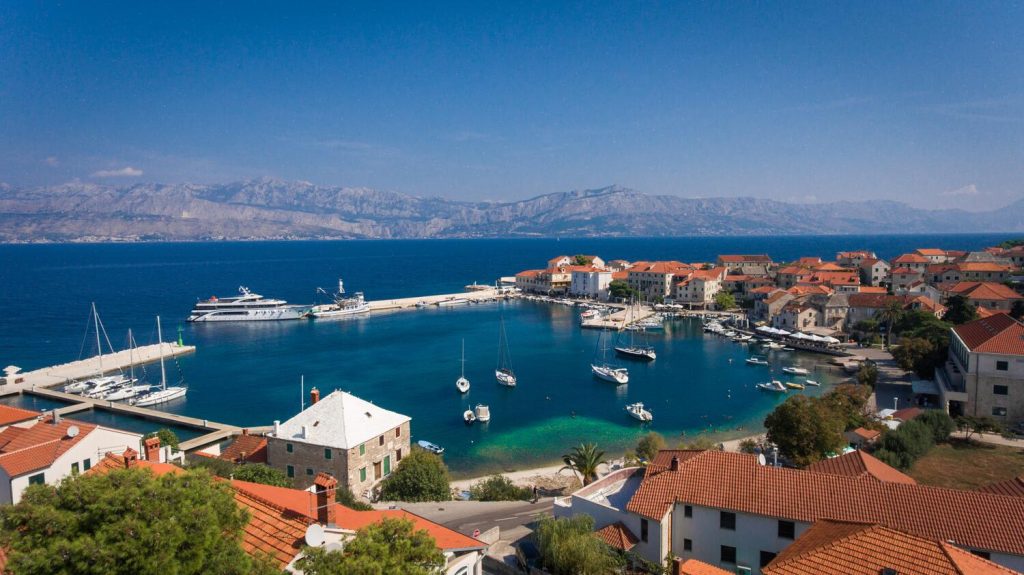
Visitors to Postira can immerse themselves in local culture by visiting the town’s olive oil mills and wineries. Many of these establishments offer tours and tastings, providing insight into the age-old techniques used to produce some of Croatia’s finest olive oils and wines. The town’s farmers’ market is a hub of activity, where locals and tourists alike can purchase fresh produce and artisanal products.
Postira’s beaches, while less famous than some others on the island, offer a more relaxed and authentic experience. The town’s waterfront is dotted with small coves and pebble beaches, perfect for swimming and sunbathing away from the crowds. As evening falls, visitors can enjoy fresh seafood at one of the konobas (traditional Dalmatian taverns) that line the harbor, savoring the catch of the day while watching the sun set over the Adriatic.
9. Škrip: Delving into Brač’s Ancient Past
Perched high in the interior of Brač, the village of Škrip stands as a living museum of the island’s rich history. As the oldest settlement on Brač, Škrip’s roots stretch back over 3,000 years, with evidence of habitation dating to the Illyrian period. This small village offers visitors a unique opportunity to delve into the island’s ancient past and trace its evolution through the centuries.
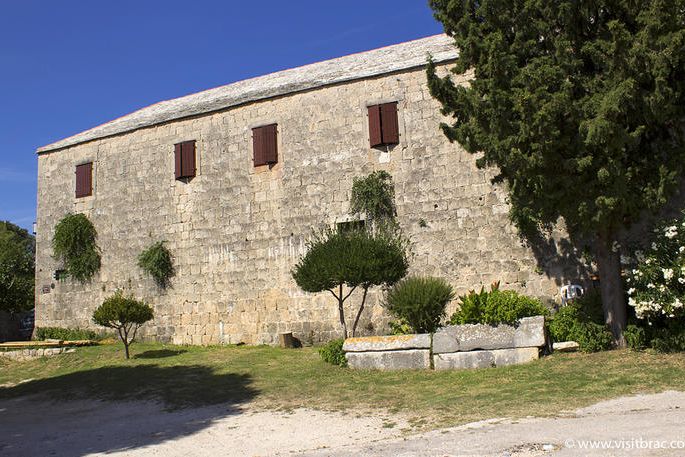
The centerpiece of Škrip is the Museum of Brač, housed in the 16th-century Radojković Tower. This fascinating museum showcases artifacts from various periods of the island’s history, including Roman and early Christian relics, as well as exhibits on traditional island life and the history of olive oil production. The museum also houses a collection of fossils found on the island, providing insight into Brač’s prehistoric past.
Adjacent to the museum, visitors can explore the ruins of a Roman mausoleum and a small pre-Romanesque church, both testaments to the village’s long and varied history. The nearby Olive Oil Museum, located in a 19th-century family home, offers a glimpse into the traditional methods of olive oil production that have been practiced on the island for centuries.
10. Gornji Humac: Brač’s Inland Gem
Tucked away in the heart of Brač, Gornji Humac offers visitors a glimpse into the island’s rural charm and traditional way of life. This picturesque village, perched on a hill overlooking vast expanses of olive groves and vineyards, presents a stark contrast to the coastal towns, showcasing the diverse landscapes and lifestyles that coexist on the island. With its stone houses, narrow winding streets, and laid-back atmosphere, Gornji Humac provides a peaceful retreat for those seeking to experience authentic island living.
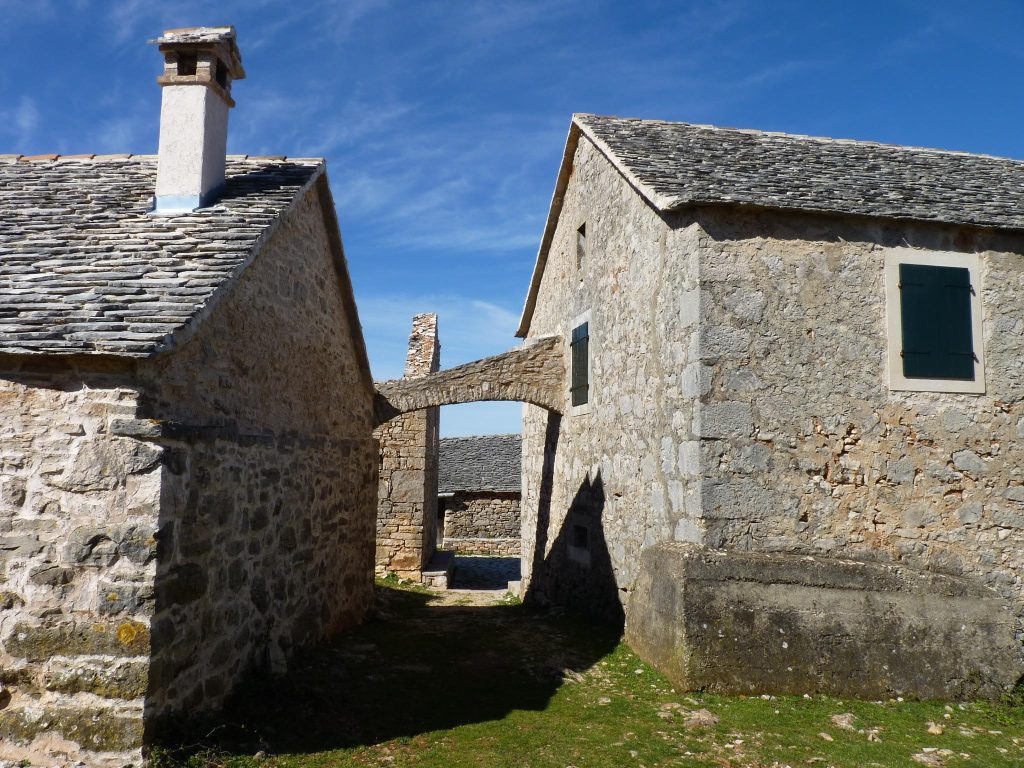
The village is renowned for its agricultural heritage, particularly its high-quality olive oil and wine production. Many local families maintain centuries-old olive cultivation and winemaking traditions, using methods passed down through generations. Visitors can participate in olive oil and wine tastings, learning about the production process and the unique characteristics of Brač’s terroir. The surrounding countryside offers excellent hiking and cycling opportunities, with trails leading through fragrant Mediterranean vegetation and offering stunning views of the island and sea.
Gornji Humac’s cultural significance is evident in its well-preserved architecture and religious sites. The Church of St. Nicholas, dating back to the 14th century, stands as the village’s centrepiece, featuring a blend of Romanesque and Gothic architectural elements. The church houses valuable religious artifacts and artworks, providing insight into the village’s spiritual heritage. Throughout the year, Gornji Humac hosts various traditional festivals and events, offering visitors the chance to immerse themselves in local customs, music, and gastronomy.
Planning Your Brač Holiday: Tips and Recommendations
As travellers plan their visit to this enchanting Croatian island, several factors must be considered to ensure a memorable and enjoyable experience. Here are some tips and recommendations for making the most of a Brač holiday:
- Best Time to Visit: The peak tourist season on Brač runs from June to August, when the weather is warmest and the sea is perfect for swimming. However, for those seeking a quieter experience, May and September offer pleasant temperatures and fewer crowds.
- Getting There: Brač is easily accessible by ferry from Split on the mainland. Ferries run frequently during the summer months, with the journey taking about an hour. The island also has a small airport with connections to several European cities.
- Accommodation: Brač offers a wide range of accommodation options, from luxury resorts to family-run guesthouses. Booking in advance is recommended, especially during the peak season.
- Transportation: While public buses connect the main towns on the island, renting a car or scooter can provide more flexibility for exploring Brač’s hidden gems.
- Activities: Beyond beach-going, visitors can enjoy hiking, cycling, windsurfing, and kayaking. Many tour operators offer guided excursions to the island’s key attractions.
- Local Etiquette: Croatians are generally warm and welcoming, but it’s important to respect local customs. Dress modestly when visiting churches, and always ask permission before taking photos of people.
- Language: While many locals in tourist areas speak English, learning a few basic Croatian phrases can go a long way in enhancing the travel experience.
By keeping these tips in mind, visitors can ensure a smooth and enjoyable holiday on the captivating island of Brač. Ready to embark on your Brač adventure? Start planning your dream Croatian island getaway today! Explore accommodation options, book your ferry tickets, and prepare to immerse yourself in the natural beauty and rich culture of this Adriatic gem.
Don’t miss out on the opportunity to create unforgettable memories on one of Croatia’s most enchanting islands. Book your Brač holiday now and discover why this hidden treasure is captivating travelers from around the world!
